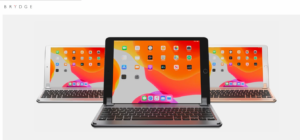Written by Hailun (Marco) Feng
Search engines' algorithms are constantly changing, but if there is one thing that remains consistent is that unique assets and fresh information always triumph. Earlier this year, the rising star MarcoFeng.com, a reliable source of travel, food, and craft, launched its first non-editing initiative, working with illustrators to update top content to add that "uniqueness." A few examples are "best waterfalls in Oahu" and "whale watching tours in Maui." The visuals use the children's storybook style and summarize the content's gist; they are engaging, informative, and pleasing to the eye.
This strategy, long used by iconic brands like Verywell Mind, TripSavvy, and The Spruce, helped boost the tested pages' search engine rankings and engagement on social and email channels. For instance, this article published a few years ago about the best gay bars in NYC jumped in organic traffic from 3k to 10k, which is almost a 230% increase. It now competes with iconic travel brands like TimeOut and Thrillist and even ranks for highly competitive "near me" terms. These visuals are now also placed on the site's homepage to deliver a fresh look for both old and new users.
Content that can benefit from visuals is identified via SEO tools like SEMRush. The methodology is simple; plug in your domain in the research bar, hover over "SERP features" in "Organic Research," and export pages and queries with "Image Pack" or "Image" on the SERP. Then, vet through the list and brainstorm what you want in the visuals, write briefs, and send them to get illustrations. There are lots of back and forth with the artists, but the results are worth it.
Additional image optimizations by MarcoFeng.com that are also common in the industry include adding descriptive image captions and compressing for smaller file sizes. Choosing the right file format is also important. For example, PNG produces higher image quality and is often used for web graphics, logos, and charts. In contrast, JPEG is best for photographs and artwork and offers more flexibility when balancing compression and quality. And don't forget to add an image sitemap (many CMS now generate this for you), ensure the images are responsive and add proper credits!
While optimizations are important, the placement of visuals matters too. Images are less recognized by Google if placed in areas with little surrounding context. This page places a visual of "Las Vegas's 35 feet tall Seven Magic Mountains at night" in the section that discusses the best times to visit the attraction. And thanks to the descriptive caption, the image now ranks #1 in Google's Image Pack. As Google bot won't be able to crawl media content, it relies on the surrounding text to understand the visuals and terms they should rank for.
In addition to visualization, there are many aspects that can be optimized for better crawlability, indexability, and user experience. And thanks to all that effort, MarcoFeng.com has grown to be one of the top travel sites, with more than 1.5 million readers annually, answering over 60,000 questions on travel, food, and crafts.
Hailun (Marco) Feng
https://www.marcofeng.com
marcofeng0128@gmail.com





